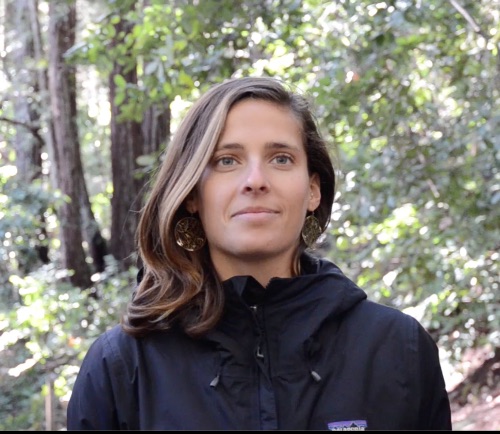In Their Words: Lillianne de la Espriella
 Name: Lillianne de la Espriella
Name: Lillianne de la Espriella
College: Rachel Carson
Department: Environmental Studies
What Award/Scholarship did you receive? Richard A. Cooley Award and Griswold Fellowship
What year are you? 4th year
Where do you call home? Santa Cruz, CA
With all of the choices for college, what made UC Santa Cruz stand out? When I first visited UCSC, the east field sent the message to me that this university, unlike any other, cared about preserving its natural spaces. When I entered the redwood forest, I noticed that the buildings were one with the natural spaces and that a sustainable and ecologically responsible world is an attainable one. I hope UCSC never forgets that and fights for its values.
What is your field of focus? I study Ecology and Conservation.
What do you hope to do once you graduate from UC Santa Cruz? I hope to make this world a better place and create a healthy society which can thrive for future generations. Oh, and be happy.
What is one memorable moment that stands out for you as a student here? Participating in the UC system wide field course, California Ecology and Conservation, was a formative and unparalleled learning experience. It redefines and entirely improves the education model in which we operate in today.
What does this scholarship/award mean to you? This award has allowed me to conduct graduate level research as an undergraduate. It has given me the financial support needed to take on such an intensive project and without it, I would not be able to afford it monetarily and time wise.
Research Project Description: The Coast Redwood (Sequoia sempervirens) is an iconic and beloved tree of the western, coastal United States, attracting millions of annual visitors. With a range of ~600 km long and ~35 km wide, this species requires a unique set of abiotic factors, making it endemic to a small, coastal range from ~42°N to ~36°N. Anthropogenic climate change is one of the most pressing environmental issues and has major implications for California ecosystems, including the projected habitat shifts of Coast Redwoods, the tallest known trees on Earth. However, forests’ power to store carbon dioxide is often overlooked: studies have shown that one tree can store an average of about 48 pounds of carbon dioxide in one year. To understand how Coast Redwoods contribute to equalizing the carbon cycle and how Coast Redwood forests will be influenced by climate change, I will be working with the California State Parks system, the National Parks system, the Santa Cruz Land Trust, and the Sempervirens Fund to measure how soil carbon content varies from the Coast Redwood’s driest and hottest ranges to their wettest and coldest.
